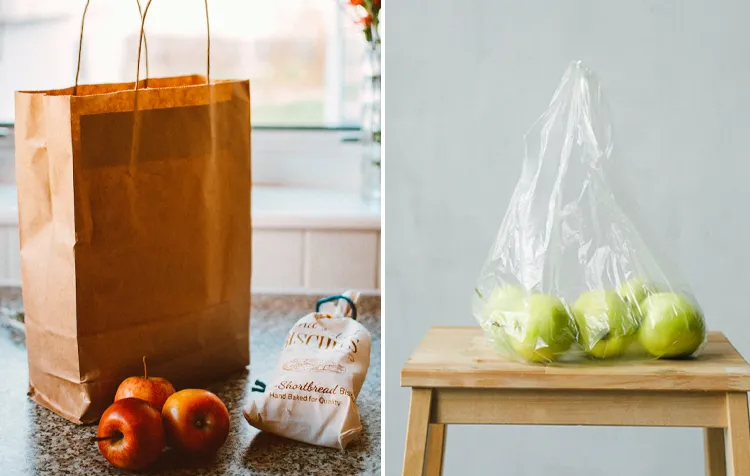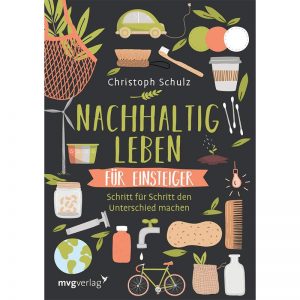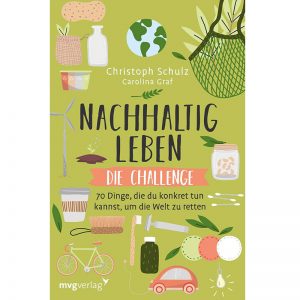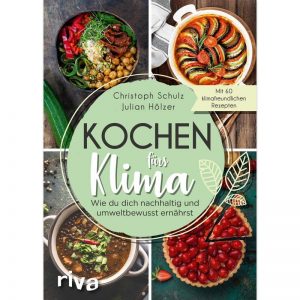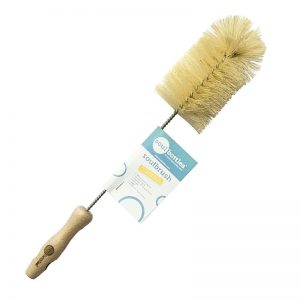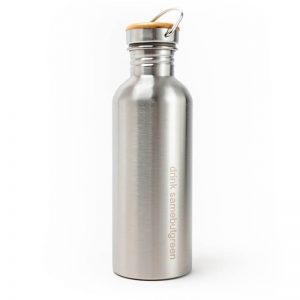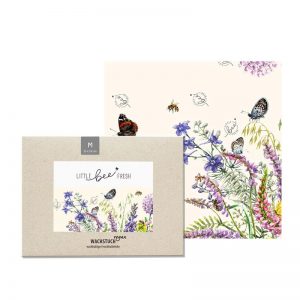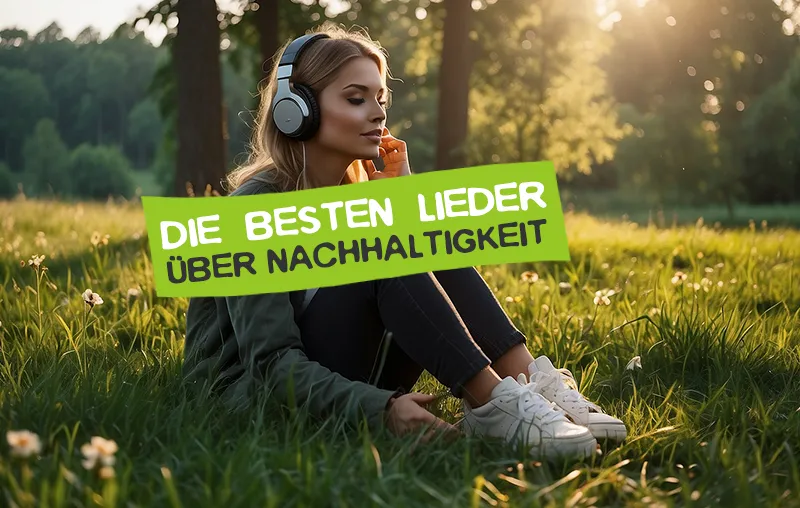Which is more sustainable and environmentally friendly - paper or plastic? If you're looking for an answer to this question, you've come to the right place! Paper, which is made from the renewable raw material wood, enjoys a pretty green image. This is in stark contrast to plastic objects made from petroleum, which is only available in limited quantities and has long been floating around in the world's oceans.
For these reasons, one legal ban on single-use plastic follows the next - and paper products are often the first alternative to replace them. But does that solve the waste problem? And is paper instead of plastic always the better choice for being as environmentally friendly as possible? After all, paper production also leads to Deforestation - and only works via a very energy-intensive process.
In this article, I would like to take a closer look at both materials so that you can always make an informed and sustainable decision in everyday situations. To this end, you will now learn about the advantages and disadvantages, decisive factors, understandable case studies and tips for everyday life. Let's go!
Here you can find a short overview in advance:
Background: Where is paper used instead of plastic these days?
The aforementioned prohibitions result in imore and more everyday objects are made of paper rather than plastic exist. But in which practical areas of everyday use is this actually the case? Where is plastic not used, or no longer used exclusively, but paper is increasingly used?
Here, for example, are disposable products such as Bags, cotton swabs or Straws plastic, symbolic of our world, and of our Disposable society stand, as they have an extremely short period of use before they end up in the trash can.
But what is particularly clear is the replacement of plastic with paper observed in the packaging industry. For example, increasingly replace Kraft paper stand up pouch the classic plastic doypacks, Paper food boxes the ToGo boxes made of styrofoam - and Corrugated cardboard or Schrenzpapier as sustainable filling material the famous crackling bubble wrap.
Advantages and disadvantages: What are the pros and cons of paper and plastic?
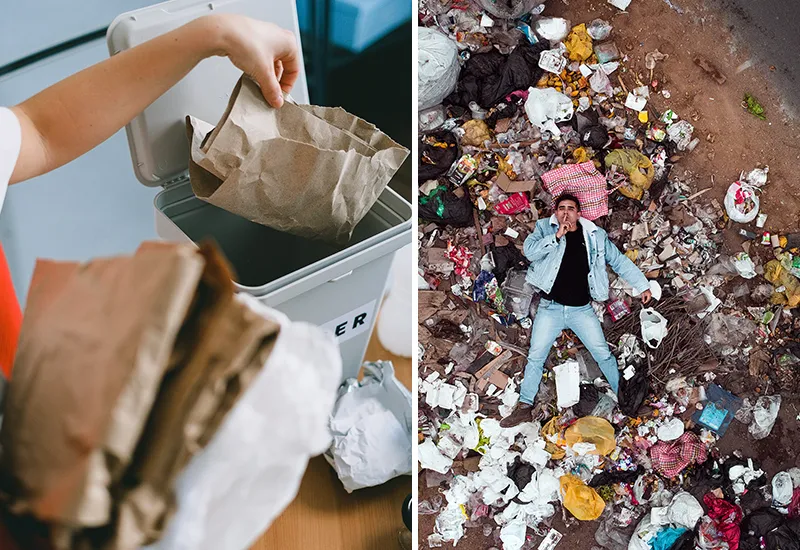
To really understand, in which situation paper or plastic is the better alternativeFirst of all, we should compare the main advantages and disadvantages of both materials. In the following, I have already compiled them for you clearly.
Advantages of paper over plastic
- Biodegradable: Paper decomposes much faster in the environment and does not leave any harmful Microplastics.
- Renewable raw material: Paper is made from the wood of trees. It may come from controlled ecological forestry or even have been made from old paper products.
- Recyclable: In most cases, paper products can be recycled more easily and in a more resource-friendly manner than plastics.
Disadvantages of paper over plastic
- Resource-intensive manufacturing: Paper production also requires a lot of wood, water and energy. To produce 500 sheets of new copy paper, about 5.5 kilograms of wood, 130 liters of water and 13 kilowatt hours of energy are required.₁
- Species extinction: Paper may come from sustainable forestry or be made from recycled material - but that is the case for very few paper products. Therefore, paper production also continues to contribute to the loss of habitat for plants and animals - and thus, of course, to the Decline in biodiversity - at.
- Ephemerality: Paper products generally do not last as long as plastic products. Especially when in direct contact with water or other liquids.
Advantages of plastic over paper
- Durability: Items made of plastic are usually much more robust and durable than their paper alternatives. This is an essential Plastic advantage.
- Weight: Things produced from plastic, as a rule, are very light, which facilitates especially the transport and handling.
- Versatility: Plastic can be produced in a variety of shapes, colors and textures and is suitable for a wide range of applications. For example, it can be flexible or hard, depending on your preference.
Disadvantages of plastic over paper
- Pollution: Probably the largest Plastic disadvantage is that the material only decomposes over many decades, centuries or even millennia, and even then it remains as a Microplastics in the sea or nature persists. Every plastic particle produced remains somewhere on earth. The human plastic waste in nature costs every year about one million seabirds and 135,000 marine mammals life.₂
- Climate-damaging production: The carbon footprint of plastics is getting worse and worse. The main reason for this is the increasing burning of coal for plastic production.₃
- Pollutants: Many types of plastic contain potentially harmful chemicals, such as plasticizers like bisphenol A. (BPA)
Factors: What determines whether paper is better than plastic?
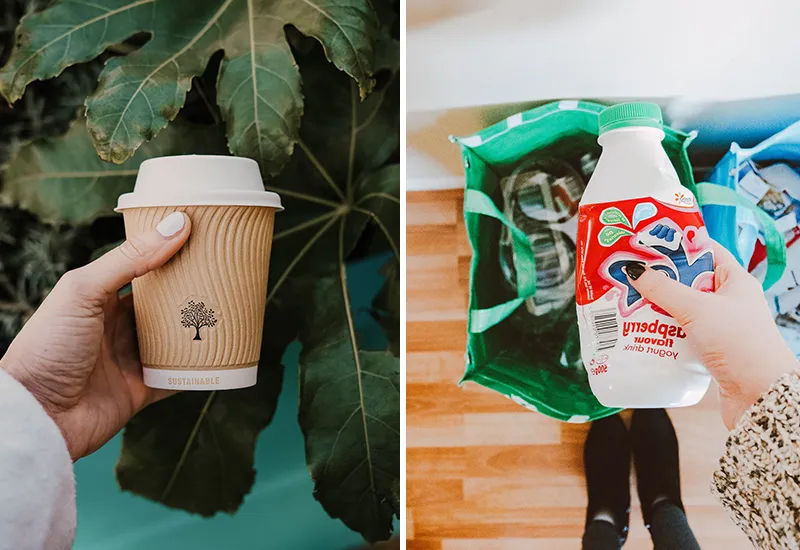
Looking closely at the pros and cons, it quickly becomes clear that when it comes to the question of "paper or plastic?" No one-size-fits-all answer there is no such thing. Rather, we have to consider other factors in each case in order to be able to make a well-considered and sustainable decision. Depending on the context and area of application, these factors can tip the scales.
Don't worry, it's easier than it sounds! Here I'll introduce you to the most important things you can check in the respective everyday situations to find out if plastic or paper is the environmentally friendly alternative.
Recycled content
Of course, above all plays the Material origin play a special role in determining whether paper or plastic is the better choice. As a general rule, the greater the proportion of recycled paper and plastic components in products, the more environmentally friendly they are - because the better they could be natural resources conserved be
Recyclability
Whether Packaging or items recyclable are and can be recycled as efficiently as possible after disposal determines to a large extent how sustainable they are.
Paper is basically easy to recycleif it is pure in type. So-called Dressing materials (coated, more moisture-resistant compounds made of paper and plastic), on the other hand, are difficult or impossible to recycle.
Plastic is generally difficult to recycle materially. It is therefore also much more costly to produce high quality products from recycled plastic.
Use and longevity
How sustainable paper and plastic products actually are also depends on the duration and frequency of their use. The longer and more often they serve their purposethe better their eco-balance will be.
If the material is not durable and long-lasting, so that the respective products can only be used a few times and then have to be disposed of, this is naturally questionable from an ecological point of view. A short life cycle (period from manufacture, through use, to disposal) is always bad for the life cycle assessment.
Filling material and quantity
Paper is not always the best alternative, to pack products. Therefore, it is important to also consider the things that you want to pack and transport in it.
This applies, for example, in the event that Liquids or very heavy objects need to be transported or protected. Here, plastic alternatives are often more efficient, safer and more durable, as they repel moisture and are generally more tear-resistant.
Disposal
In addition to recyclability, the decisive factor is, of course, whether consumers use their Separate waste correctly and dispose of. From a Yogurt cup for example, the paper label can be easily separated so that aluminum foil and plastic cups can go into the yellow bag and the label into the paper waste. With composite materials (e.g. Rice bag made of paper with plastic coating), however, this is not possible, making recycling impossible or difficult.
Can you think of any other factors that are important to the decision? Then I look forward to your ideas and suggestions in the comments below the article.
Practical case studies: When is paper better than plastic - and when isn't?
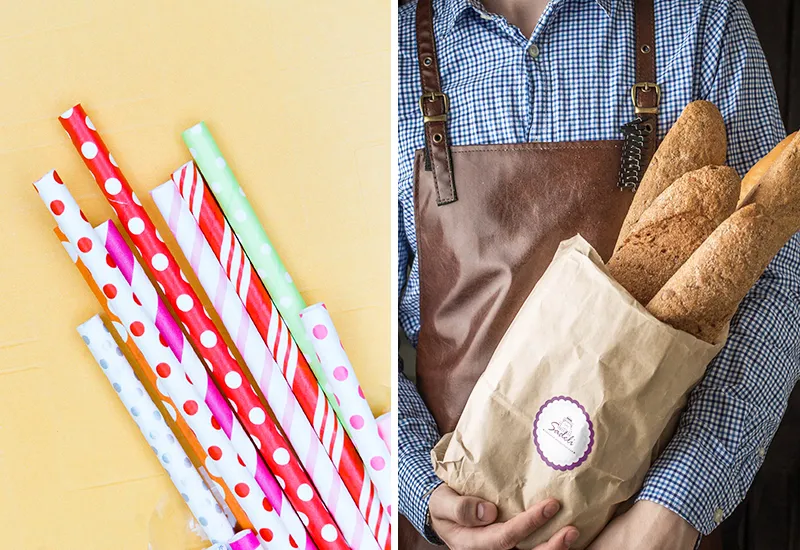
Every person with pronounced Environmental awareness knows those moments when the question "paper or plastic?" comes up. Because there are indeed situations and decisions from time to time in which we are faced with the Answer not so easy for various reasons falls as one had initially suspected.
Here I would like to introduce you to some of them and at the same time show how I would decide.
Tetra Pak
The beverage cartons, often used for juices or milk, are made of a combination of Paper, plastic and aluminum. However, according to the German Environmental Aid Association (Deutsche Umwelthilfe), the adjusted recycling quota is only around 30 percent, and no recycled cardboard is used in its manufacturebut virgin fibers. This is another reason why the organization is calling for a deposit system for disposable beverage cartons.
I personally try to avoid Tetra Paks (and also plastic bottles) as much as possible and prefer instead regional juices from returnable glass bottles.
Bags and shopping bags
Plastic bags are reusable - but many people only use them for a few minutes before they end up in the trash or even remain in the environment for centuries. Reusable paper bags and paper carrier bags are a good biodegradable alternative.
However, according to NABU, they would have to be Use at least three times as often as a classic plastic bagso that the carbon footprint is balanced out. Finally, the production of the paper alternative also involves a large amount of energy and water.₄
I only use a Cloth bag, a carry basket or my backpackto transport shopping or other things. So the question "plastic bag or paper bag?" doesn't even arise. Even at the bakery, I don't use plastic or paper bags and instead have rolls, bread or pretzels put into a cloth bag that I bring along.
Filler material for packages
Bubble wrap or plastic chips designed to protect products during shipping are increasingly replaced by More sustainable filling materials replaced. How for example Bioplastic, dross paper or crumpled newspaper.
Whether paper or plastic - I simply reuse any filler material from shipments that have reached me. The more often it is reused, the better. Also, I generally try, Avoid returns in a targeted manner, so that there is no duplicate waste.
Beverage cup
Every hour, around 320,000 coffee-to-go cups are consumed and disposed of in Germany.₅ Even though they are mainly made of paper, the cups have a plastic coating. This makes a Complete recycling hardly possible and contributes to the fact that the majority of a cup ends up in the incinerator.
Personally, I don't buy drinks in disposable cups. Instead I drink beverages on site in the café or wear a Refillable reusable cup with me, for which I am even rewarded with a small discount by some companies.
Drinking straws
Paper straws (preferably recycled) are often a more environmentally friendly choice compared to plastic straws because they are single-origin and decompose more quickly. However, they are also still disposable productsThey are expensive to produce but are only used for a few minutes. With drinking straws made of glass, stainless steel or bamboo wood, there are really many environmentally friendly, washable and reusable alternatives, so that no more waste has to be created.
I prefer at home and in bars or cafes Glass straws or other reusable drinking straws. And if there is none, I simply waive it by briefly mentioning it when ordering.
Can you think of other case studiesDo you often wonder whether paper or plastic is the more sustainable choice? Then write me a comment with your experiences.
Tips: What can consumers:inside look out for?
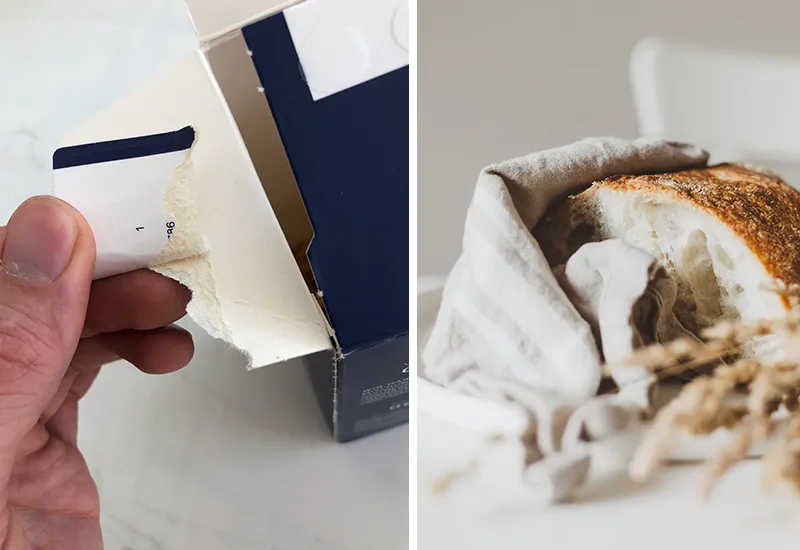
The Recycled content, the Recyclability or the Useful life of paper and plastic alternatives already reveal a lot about whether they are environmentally friendly or not.
In principle, we consumers can also contact Eco-labels for paper on the respective products. For example the "Blue Angel", the "ÖkopaPlus" seal or the "EU Ecolabel".
But even then it is still difficult to distinguish between recyclable, pure paper products and only partially recyclable mixed or composite materials.
The remedy here is the Tear test - If you can see a thin film in the crack of the cardboard, then it is a composite material. This can also be only with significantly more effort tearing than a pure paper product. Furthermore, a glossy and moisture repellent surface an indication that paper and plastic were combined.
But as a consumer, you can do even more to protect the environment than prefer recycled paper to disposable plastic! For example, as far as possible plastic free living and the best Tips for waste avoidance in everyday life implement. For example, it is advisable to transport bread from the bakery in the cloth bag you brought with you and to do without the paper or plastic bag altogether.
Because whether plastic or paper waste - the Waste avoidance (e.g., through packaging-free or reusable alternatives for disposable products) is basically always the most sustainable action.
Tip: Whether it's a water bottle, oilcloth, dishwashing brush or glass straw - be sure to check out my Zero Waste Basic Equipment which can really prevent just about any waste.
Paper or plastic? It depends!
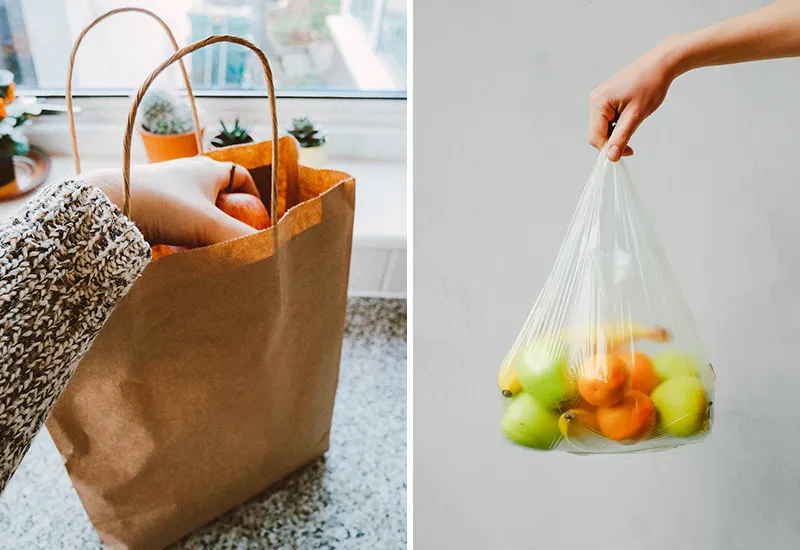
Paper instead of plastic - it sounds so simple and environmentally friendly. But as we have seen, the decision far more complex than it appears at first glance. Because even though we produce paper, cardboard & Co from the renewable raw material wood, they are often but not automatically always the more environmentally friendly alternative.
Whether paper or plastic is the most ecologically sound solution in each case, depends on many different factors off. Today you got to know them. From production costs, material origin, biodegradability, recyclability and longevity, to the planned service life, you should include them all in your decision-making process.
"The best garbage is the garbage that doesn't get created in the first place."
Unknown (more under Zero Waste Quotes)
You now know when and why the decision is tricky every now and then - and that in many cases there are even more sustainable alternatives because they avoid waste. Ultimately, it is up to us as consumers to make informed and well-considered decisions, and not to be swayed by targeted Greenwashing to be misled.
I hope this article has given you some valuable insights into the duel "paper vs. plastic" given. Do you have any questions, comments or your own experience with it that you would like to share? Then I am very much looking forward to your comment.
Stay sustainable,

PS: How you save paper in a targeted manner in everyday life and how exactly a paperless office I'll be happy to explain how it works next in the linked blog posts. Have fun!
References:
₁ J. Trauth, E. Schönheit (2016): Paper Compass, 16th edition, Forum Ecology & Paper, August 2016, p. 4.
₂ NABU (Naturschutzbund Deutschland) e. V.: Plastikmüll und seine Folgen, available at https://www.nabu.de/natur-und-landschaft/meere/muellkippe-meer/muellkippemeer.html. [09.08.2023].
₃ Bund für Umwelt und Naturschutz Deutschland e.V. (BUND): Ressourcenverbrauch muss sinken - Viele Plastikprodukte werden mit dem Klimakiller Kohlestrom produziert (Stand: 22.12.2021), available at https://www.bund.net/themen/aktuelles/detail-aktuelles/news/ressourcenverbrauch-muss-sinken-viele-plastikprodukte-werden-mit-dem-klimakiller-kohlestrom-produziert. [09.08.2023].
₄ NABU (Naturschutzbund Deutschland) e. V.: Plastiktüten? Avoid instead of replace!, available at https://www.nabu.de/umwelt-und-ressourcen/oekologisch-leben/alltagsprodukte/19463.html. [09.08.2023].
₅ Deutsche Umwelthilfe e.V.: Factsheet - Umweltproblem Coffee to go-Einwegbecher Die wichtigsten Fakten (Stand: 01.09.2015), available at https://www.duh.de/fileadmin/user_upload/download/Projektinformation/Kreislaufwirtschaft/DUH_Coffee_to_go_FactSheet.pdf. [09.08.2023].

